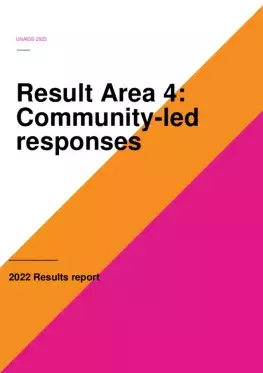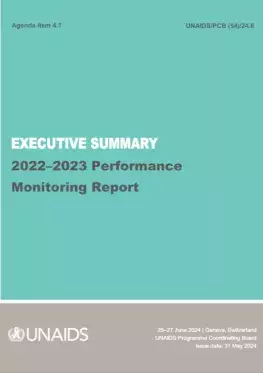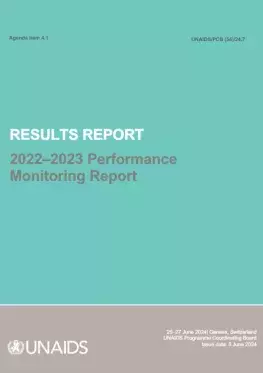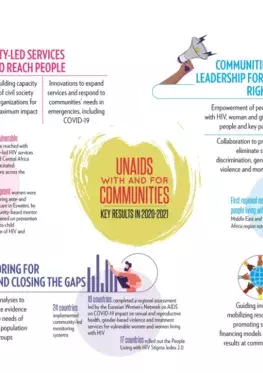The Global AIDS Strategy 2021–2026 recognizes that communities living with and affected by HIV are central to ending AIDS by 2030. The Strategy calls for commitments to the expanded role of communities to ensure more effective responses, especially for people in need of HIV prevention and treatment services who are the most underserved. Community-led AIDS responses are vital for addressing stigma and discrimination; providing treatment education and adherence support and prevention interventions; supporting differentiated service delivery; and reaching all people who need those services.
Community-led Responses
Building on the first definition of a community-led HIV response, developed by a multistakeholder task team, the Joint Programme continued to actively promote, guide and support the expansion of community-led HIV responses in 2022-2023. It developed draft guidance on community-led HIV responses in consultation with global networks of people living with HIV, women and key populations. It also provided technical support to community-led organizations in 74 countries and to 83 countries to incorporate and expand community-led HIV responses. Though still limited, community-led monitoring is occurring in 75 countries with Joint Programme support.
Advocacy for and analysis intensified to leverage resources for community-led responses, including through costing and resource tracking. Aiming to enhance more sustainable community-led responses, a model to assess the social returns on investment in social contracting is supporting efforts in eight countries to develop social contracting guidelines.
The UNAIDS World AIDS Day 2023 report, “Let communities lead”, highlighted the unique and invaluable role of community-led responses, documented experiences from across the world, outlined barriers to community leadership and called for a comprehensive action agenda to put communities at the centre of efforts to end AIDS as a public health threat.
Joint Programme welcomed and supported the engagement of community partners in the development of broader HIV-related normative guidance such as for the elimination of vertical transmission and guidelines for HIV interventions for key populations.
In all aspects of its work, the Joint Programme supported the leadership and empowerment of multiple networks of people living with HIV, women and key populations at country, regional and global levels. This included organizing and/or promoting inclusive policy dialogues and diverse capacity building initiatives to improve HIV and broader sexual and reproductive health (SRH) services; advance human rights, including through the removal of discriminatory laws and policies; and increase gender equality, including for LGBTQI+ persons.





